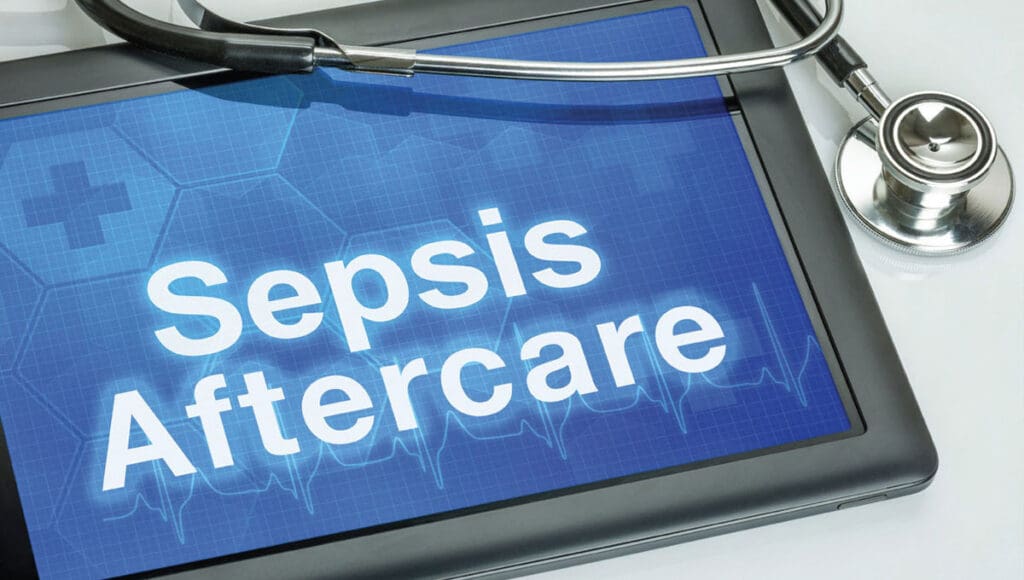
In a step that will have national impact as far as improving outcomes for the 1.7 million Americans who survive a sepsis episode each year, the CDC announced in July that it is including a new “Encounter for Sepsis Aftercare” diagnostic code in the latest update of its International Classification of Diseases (ICD-10) list. The new code, z51A, which takes effect on October 1, will alert home care nurses and other post-acute providers that, in addition to other conditions a patient is being treated for, the patient also recently had sepsis.
The need for this new code first surfaced in a study published in 2020 by our researchers from the Center for Home Care Policy and Research. The investigators reviewed the records of 165,000 sepsis survivors who entered home care nationwide and found that their sepsis history was noted in their admission assessment just 7% of the time—despite the fact that sepsis survivors have a one-in-five risk of being rehospitalized within 30 days of discharge, and a 30% readmission rate overall. Between one-third and one-half of these readmissions are due to sepsis recurrence, which is also one of the most important risk factors for one-year mortality among sepsis survivors.
“Clearly, this is a population that needs close monitoring after discharge,” says Dr. Kathryn Bowles, director of the Center for Home Care Policy & Research and professor and van Ameringen Chair in Nursing Excellence at the University of Pennsylvania. “But for this to happen, we first need to identify them as sepsis survivors.”
Looking for a potential fix, the researchers zeroed in on how hospitals and home care agencies were coding sepsis patients during the transition from hospital to home. “Because these sepsis cases have been resolved from the hospital’s perspective, hospital staff had no way to code for sepsis in the patient’s discharge notes,” explains Dr. Bowles. “As a result, home care providers may not know that their patient is a sepsis survivor and in need of close monitoring to prevent a potentially fatal relapse.”
Following the study’s publication, Dr. Bowles, the study’s principal investigator, and her team led an effort to convince the CDC of the need for a new diagnostic code that defines sepsis aftercare as a separate condition—an effort that culminated in a formal presentation by the team to a CDC committee in March of 2023. “The presentation went extremely well,” Dr. Bowles recalls. “The committee was very accepting of our rationale.”
Our research center and Penn Nursing are currently conducting an NIH-funded study in which they’re encouraging hospital providers to include patients’ sepsis history in their discharge notes, and the results have been encouraging: The study recorded a 78% success rate for improved sepsis communication between VNS Health and one major New York City hospital group. Once the sepsis aftercare code is implemented, it’s anticipated that communication between acute and post-acute care will be further enhanced, enabling post-acute providers to consistently target sepsis survivors for evidence-based care.
As an example of such care, in the same study our team is also disseminating a front-loaded home care protocol that their research shows significantly reduces readmissions among sepsis survivors. This protocol includes starting home care within two days of discharge; receiving a second visit from a home care nurse during the first week of home care; and seeing an outpatient provider within seven days of discharge. The study found that sepsis survivors who received this pattern of care had readmission rates 7% lower than patients who did not get timely attention.
“Our original records review showed that only 28% of sepsis survivors nationwide admitted to home care received the protocol cited in our study,” Dr. Bowles notes. “Between this new code and raising awareness of how vitally important it is to provide timely attention to sepsis survivors post-discharge, our hope is that this number will increase dramatically, and sepsis survivors will get the care they need.”



